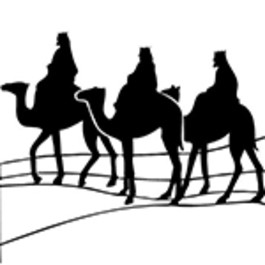Good News: The World Didn't End Yesterday

On this day after December 21, 2012, the good news is we’re still here! Bands of New Agers, in particular, have been holding their collective breath as our civilization approached the fateful date: 4 Ahaw, 3 K’ank’in. That’s the date, the ancient long count Mayan calendars predicted, on which the sun would rise for the first time in 26,000 years at precisely the juncture of earth’s orbit with the giant inky rift in the Milky Way the Mayans called “Xibalba Be.” And at that moment of intersection (the winter solstice, 2012), the pent-up energy of the universe—having accumulated over a period of 13 baktuns (144,000-day cycles)—will discharge, these ancients calculated, and earth will face . . . . And frankly here the prophetic picture becomes murky with some Mayan authorities suggesting the predicted event to be an ushering into an age of glorious transformation, while others conclude the Mayans predicted a cataclysmic ending to this civilization. But irrespective of the various hypotheses, the reality is that you and are still here on this joyful Sabbath before Christmas. Which is no reason to belittle the ancient Mayans. According to a piece by Ed Dickerson in Signs of the Times magazine (December 2012), “the sophistication and complexity of the Mayan mathematics make their predictions difficult to ignore. Their mastery of mathematics—they were among the earliest to use the concept of zero—and their careful observation of celestial objects enabled them to construct calendars (17 in all) based on the movements of the sun, moon, several planets, and even ‘precession,’ the slight wobble in earth’s rotation that takes 25,800 years to complete!” (p 33) Two thousand years ago a band of Oriental sages—magi or wise men, as we remember them—engaged in their own celestial calculations. Pouring over the ancient script of the fourth book of Moses, they attempted to correlate the sudden appearance of a distant nighttime celestial body in their heavens with the prophecy of an early member of the magi named Balaam: “A Star shall come out of Jacob; a Scepter shall rise out of Israel” (Numbers 24:17). Believing the night phenomenon they were witnessing to be linked to this mysterious prophecy, these magi set out to follow that star in search of the promised King, with perhaps less mathematical calculus or precision than the even more ancient Mayans. The Mayans and the magi—ancient precursors to bands of men and women today who still search the night heavens and wonder what the dark future will bring. The dark night rises, but so does the Morning Star. “I wonder as I wander out under the sky,” the Appalachian carol sings, “why Jesus the Savior did come for to die.” (Haven’t we wondered the same?) “ . . . for poor, ornery creatures like you and like I.” (The carol knows us too well.) “. . . I wonder as I wander out under the sky.” No wonder we have nothing to fear for the future, except that we forget how God has come to us in the past. As you light a candle this Christmas Eve and ponder the mystery of this God-coming, may the flickering promise that He shall come again, this Christ Child King, invade your heart and your calendar with the very best gift of all: hope.